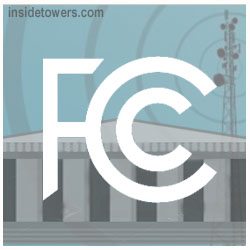NAB urged the FCC to adopt technically sound proposals that won’t cause interference for TV White Spaces devices (TVWS). The association prefers the Commission stick with the “narrow” set of proposals set forth in the Notice of Proposed Rulemaking (NPRM) and not consider “extraneous requests” that would expand those proposals or “effectively rewrite fundamental aspects” of the FCC’s Part 15 rules.
White Spaces make up the unlicensed spectrum between television channels. Microsoft’s Airband project uses TV White Spaces, among other technologies, to provide wireless broadband in rural areas. The Commission more than a year ago asked the NAB and Microsoft to work out a spectrum-sharing agreement.
“Unlicensed services must not cause harmful interference to licensed users,” NAB said in reply comments on the proposal. Based on that, NAB and Microsoft worked together to craft proposed changes to enable improvements to TVWS service while protecting television reception from harmful interference.
The Public Interest Spectrum Coalition (PISC) and WISPA urged the Commission to adopt a new model for guarding broadcast television service, asserting it’s overprotected. These claims are inaccurate, according to NAB, which says contour protection is the only reasonable way to adequately shield consumer TV receivers.
The PISC asked the agency to adjust TVWS protections based on the use of directional antennas by TVWS devices. While NAB recognizes directional antennas can reduce the potential for interference in some directions, it says: “there is absolutely no way of determining whether a directional antenna has been installed properly without hiring a licensed land-surveyor.”
NAB calls WISPA’s suggestion that the Commission, and broadcasters, rely on “professional installation” to confirm proper deployment of directional antennas, “deeply unserious. Professional installation remains an undefined and unreliable concept, as elusive as the Loch Ness Monster or Sasquatch,” notes NAB.
NAB urges the FCC not to change its rules for first-adjacent channel operations. Microsoft submitted testing results that it claims support its request for higher power on first-adjacent channels. Microsoft conducted testing using only new receivers (2018-2019 models), according to the broadcast association. “This provides no useable information whatsoever with respect to older receivers, which almost certainly make up the bulk of the installed consumer base and may be more susceptible to potential interference from TVWS operations on first-adjacent channels,” says NAB.





Reader Interactions